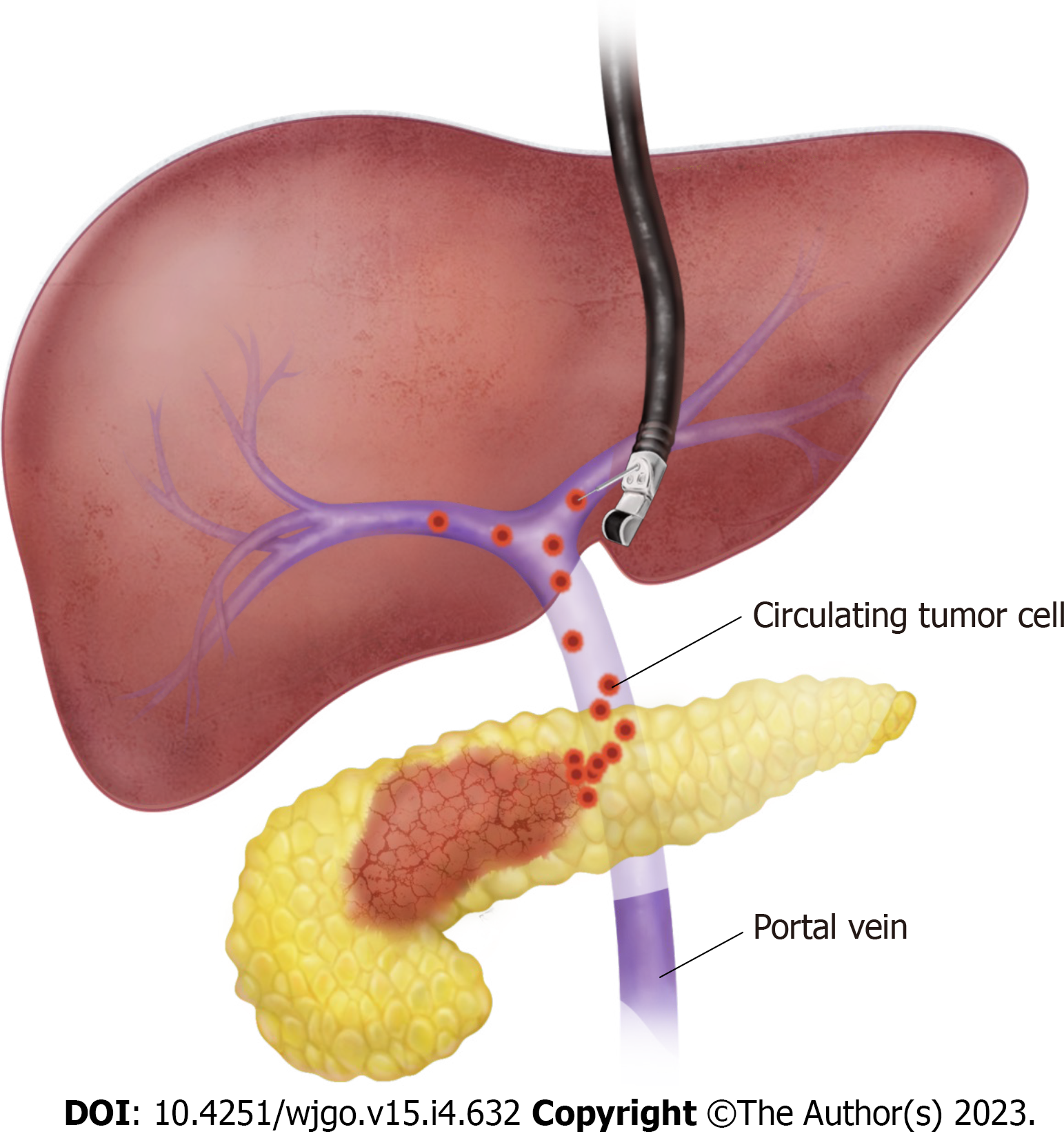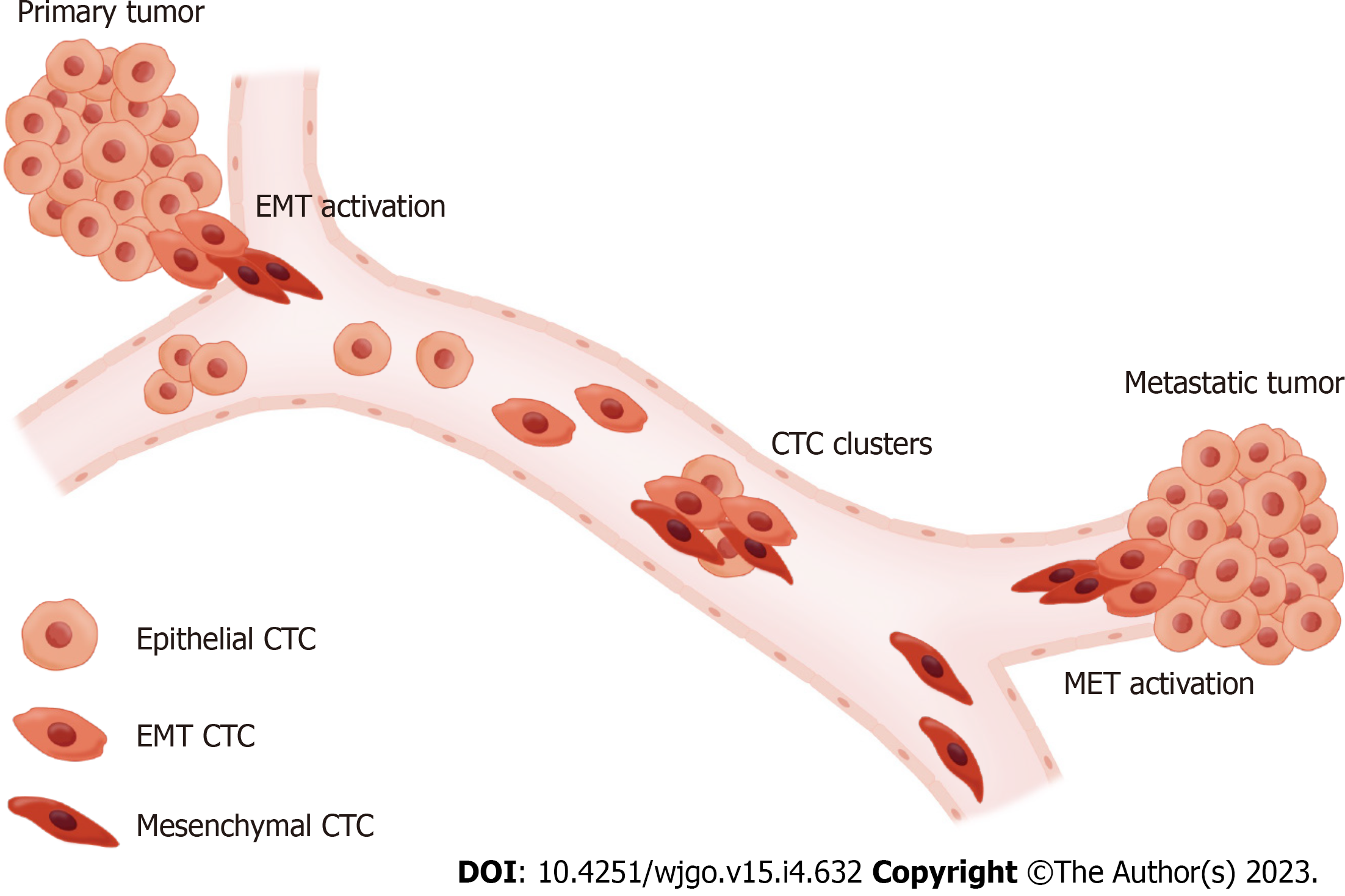Copyright
©The Author(s) 2023.
World J Gastrointest Oncol. Apr 15, 2023; 15(4): 632-643
Published online Apr 15, 2023. doi: 10.4251/wjgo.v15.i4.632
Published online Apr 15, 2023. doi: 10.4251/wjgo.v15.i4.632
Figure 1 Illustrated view of portal vein sampling with an endoscopic ultrasonography-fine needle aspiration needle.
Circulating tumor cells (CTCs) from pancreatic cancer are released in the portal vein; portal blood sampling before passage in the liver can allow for improvement of the CTC recovery rate. The endoscopic ultrasonography-fine needle aspiration needle is advanced transhepatically into the portal vein and portal venous blood can be aspirated safely.
Figure 2 Characteristic stages of circulating tumor cells during metastasis.
Cells from the primary tumor undergo epithelial-mesenchymal transition, which enables them to disseminate to blood vessels. Cancer cells travel as various phenotypes of circulating tumor cells (CTCs) and extravasate the vascular system after undergoing mesenchymal-epithelial transition. This reverse process allows CTCs to escape from blood vessels into distant organs to form a metastatic tumor. CTC: Circulating tumor cell; EMT: Epithelial-mesenchymal transition; MET: Mesenchymal-epithelial transition.
- Citation: Ko SW, Yoon SB. Clinical implications and perspectives of portal venous circulating tumor cells in pancreatic cancer. World J Gastrointest Oncol 2023; 15(4): 632-643
- URL: https://www.wjgnet.com/1948-5204/full/v15/i4/632.htm
- DOI: https://dx.doi.org/10.4251/wjgo.v15.i4.632














